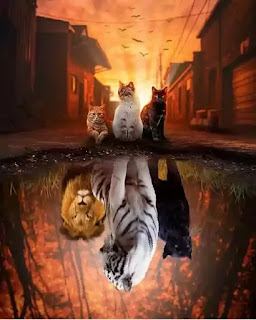Also Read
Introduction : T. S. Eliot is the depressing poet of a disillusioned age. He is by his education and heritage, a misfit in the modern world. He has been always a traditionalist in his attitude to life. His main pre occupation has been in pre-scientific learning', - in literature and philosophy as the esoteric teachings of Zoroaster, the Buddha and Lao-Tse. He was dissatisfied with science or, as he called it, the 'ignorant knowledge' of his age; yet, within his own limitations, he has been richly assimilative and even powerfully original, specially in the matter of poetic technique. Thus he came to appreciate and absorb the imagist cult, the technique of the "internal monologue" and other sensational devices to arouse the jaded consciousness of contemporary man. He uses symbols that stir certain vague associations, believing that the totality of these associations, will create some fundamental association.
 |
| Eliot Imageries |
Eliot was a great metrist. He was a great experimenter with verse forms. In his long poetic career, he experimented with over forty metres. In this manner, he introduced new measures in order to express the complexity and intricacy of modern life. The traditional iambic metre was made more flexible by him. T.S. Eliot made use of this metre to express the changing tempo of the modern mind, feelings with the soul, the jarring sounds and incoherent noises of urban life. This metre enabled him to express the clash of opposite thoughts.
Versification of "The Waste Land" : The Waste Land shows the culmination of Eliot's skill in the handling of traditional metres. The poet has made use of the heroic line which has been handled very successfully. He is performing miracles of beauty and sweetness by means of using traditional forms. "At all its greatest moments we are conscious of the rhythms of Shakespeare and Milton." According to Helen Gardener, the form of Four Quartets emerged out of The Waste Land. So it is no denying the fact that the form of The Waste Land is par excellent. This form was further developed by the poet in Four Quartets. According to A.G. George, the form of Four Quartets is created out of the musical form of the sonata, the lyric and the narrative poetry. It is a form which is very suitable for philosophical and meditative verse in Four Quartets.
Irony in Eliot's poetry : Irony is based on the principle of contrast. There are two kinds of irony, namely the verbal irony and the irony of situation. Verbal imagery is due to opposition between the words used and meaning intended. Real meaning is concealed under language's opposite meaning. In some cases it is also called sarcasm. The irony of situation implies a contrast between what is and what ought to be. Irony is used generally by satirists for the purpose of shocking the reader so as to heighten the effect of their corroding criticism. Eliot uses a good deal of irony in The Love Song of J. Alfred Prufrock. The very title is ironical. There is no love song on a proposal to his lady. In fact, he is a coward who wants excuses for his indecision in matter of love. Similarly, in A Game of Chess, voluptuousness of the lady has been described with an extravagant suggestion of Cleopatra's splendour and majesty. But the word synthetic changes the entire meaning. There is ironic contrast in The Waste Land, as for example the contrast between sexy typist and lady in The Vicar of Wakefield.